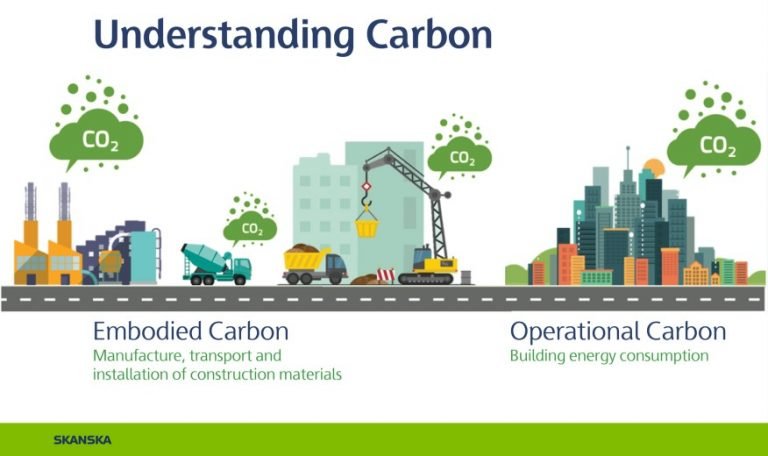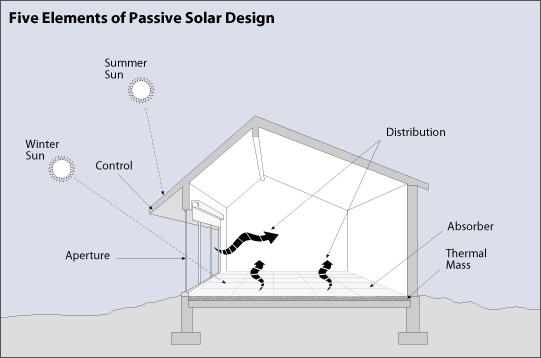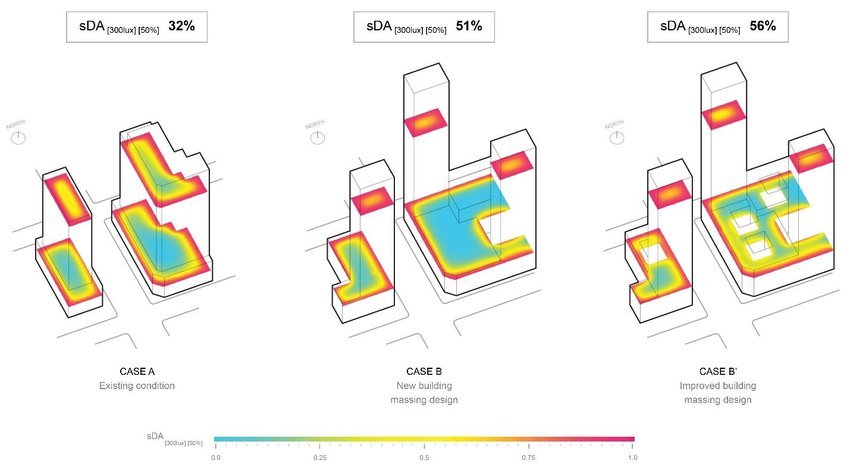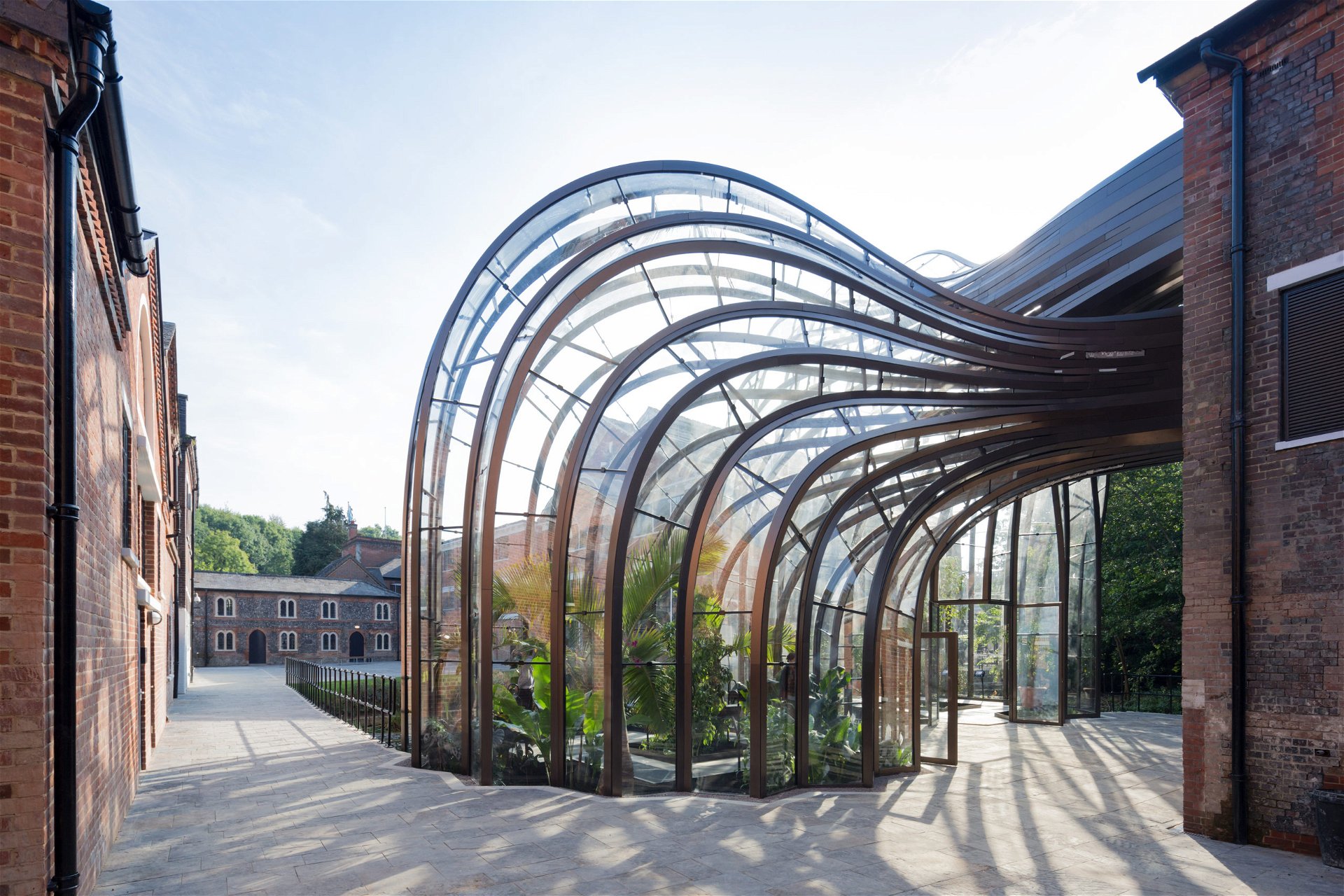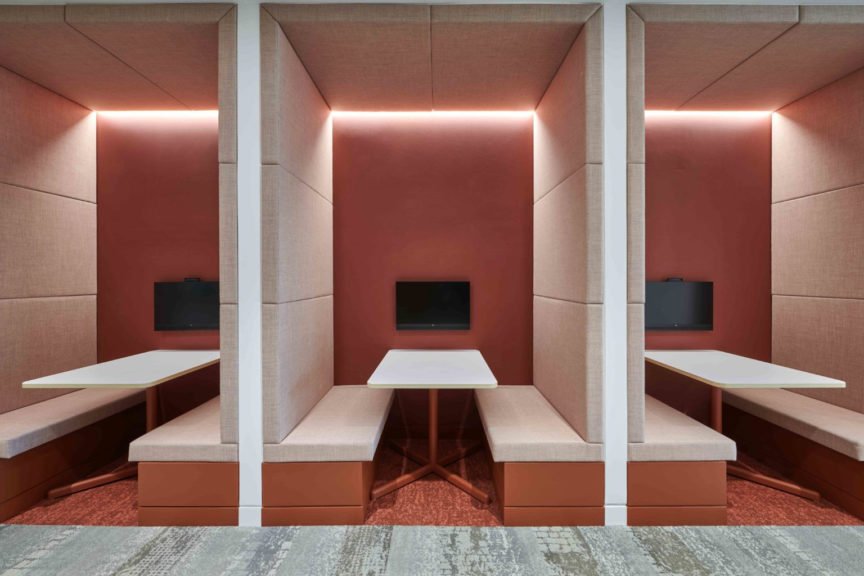Carbon neutrality has emerged as a critical concern across industries due to its impact on climate change. In the realm of interior design, the call for sustainable practices is gaining momentum. Reports by the United Nations Environment Program (UNEP) reveal that the construction industry accounts for nearly 39% of global carbon emissions. Consequently, there’s growing enthusiasm for achieving net-zero energy consumption in the pursuit of sustainability within the built environment.
Interior design constitutes a significant part of the construction industry. Unfortunately, approximately one-third of underutilized commercial spaces generate an estimated 22 million tons of CO2. Studies also suggest that $𝟯.𝟯𝟲 𝗯𝗶𝗹𝗹𝗶𝗼𝗻 𝗶𝘀 𝘀𝗽𝗲𝗻𝘁 𝗼𝗻 𝗲𝗹𝗲𝗰𝘁𝗿𝗶𝗰𝗶𝘁𝘆 𝘁𝗵𝗮𝘁 𝗮𝗿𝗲𝗻’𝘁 used to its full potential. As a result, enterprises are recognizing the significant implications of this situation and actively exploring methods to diminish their carbon footprint. A pivotal stride in this endeavor involves reshaping built spaces into high-efficiency, low-carbon impact environments.
Now, let’s delve into the significance of carbon neutrality in interior design and why designers hold a pivotal responsibility in integrating low-carbon impact practices.
Interior Design & Carbon Neutrality
Interior design stands at a juncture where creativity intersects with responsibility. The carbon footprint resulting from design choices necessitates a paradigm shift towards low-carbon impact practices. The imperative of carbon neutrality in design is rooted in mitigating the ecological repercussions of our built environment.
Interior design’s imperative to embrace carbon neutrality stems from its direct influence on space utilization, material selection, and energy consumption. Given that the built environment significantly contributes to global carbon emissions, interior designers wield immense potential to curtail this impact through conscientious choices.
Benefits of Carbon-Neutral Design Practices
Reduced Environmental Footprint
Embracing low-carbon impact practices significantly diminishes the overall environmental footprint, contributing to a healthier planet. This aligns with global initiatives like the Paris Agreement and UN Sustainable Development Goals.
Enhanced Indoor Air Quality
Opting for sustainable materials ensures better indoor air quality, benefiting the health and well-being of occupants. This aligns with WELL Building Standard criteria, promoting human-centric spaces.
Cost Savings and Efficiency
Integrating energy-efficient systems and sustainable materials often results in cost savings over time. Studies by the U.S. Green Building Council show that green buildings yield operational cost reductions of up to 9%.
Market Demand and Reputation
Clients increasingly prioritize sustainability, thereby boosting the market demand for carbon-neutral designs. This positions designers at the forefront of a burgeoning trend while enhancing professional reputation.
Sustainable designs have a longer life cycle, ensuring resilience and adaptability to evolving environmental challenges, making them a wise investment for the future.
Moving forward, let’s explore how to design for carbon neutrality through specific low-carbon impact practices and materials.
Low Carbon Impact Design Practices and Techniques
Passive Design Strategies
Incorporating passive design elements like natural lighting, optimal orientation, and effective insulation reduces reliance on artificial heating and cooling systems. Designers should prioritize orientation analysis and window placement during conceptualization.
Selection of Building Envelope Materials
The building envelope serves as a physical boundary between a structure’s interior and exterior environments. Precise selection of these materials is pivotal in crafting a net-zero space. Opting for materials with low U-values for walls and roofs, coupled with glazing featuring low U-values and high visibility, establishes an effective thermal barrier, diminishing heat transfer between the building’s interior and exterior. Research indicates that employing low-emissivity (low-E) glazing can curtail heat loss through windows by 30-50%, resulting in potential energy savings of up to 30%.
Key Insights:
Initiate Material Audits: Commence scrutinizing the existing building envelope materials within your interior spaces. Identify areas where enhancements can be made by substituting or upgrading materials to those boasting superior insulation characteristics.
Emphasize Sustainable Sourcing: Prioritize materials not only for their energy efficiency but also for their sustainable sourcing. Seek certifications such as LEED or Green Guard to ensure the chosen materials align with established environmental standards.
Strategic Zoning of Floor Plates for Daylight Optimization
Efficient zoning of the workplace’s floor plates can yield substantial impacts on energy consumption and employee well-being. The International Energy Agency (IEA) highlights that optimized daylight utilization has the potential to reduce energy consumption by up to 50% in commercial buildings.
Optimizing the layout to maximize access to natural daylight minimizes reliance on artificial lighting. This not only conserves energy but also fosters a more pleasant and productive atmosphere.
Key Insights:
Conduct Comprehensive Daylight Analysis: Undertake a thorough assessment of natural light distribution within your floor plate. Utilize this data to zone the spaces accordingly based on task and usage.
Adaptive Reuse and Upcycling
In interior design, sustainability transcends the mere structure of a building; it encompasses the interior environment as well. According to the Environmental Protection Agency (EPA), recycling interior materials holds the potential to divert substantial waste from landfills and diminish greenhouse gas emissions.
Key Insights:
Local Sourcing: Opt for locally sourced materials to support artisans and minimize the carbon footprint linked to transportation. This approach also contributes to preserving traditional craftsmanship.
For instance, repurposing reclaimed wood into distinctive office desks, shelving units, or feature walls in commercial interior spaces.
Repurposing Industrial Components: Explore the creative possibilities of reusing salvaged industrial components within the interior design. Salvage yards often offer a wealth of materials like reclaimed steel beams, vintage machinery parts, or discarded factory equipment.
Apart from the techniques what are the materials that can be used for a carbon-neutral built environment? Let’s have a look:
Materials for a Low-Carbon Impact Design
Bamboo: Bamboo, a fast-growing renewable resource, sequesters carbon rapidly. Its use in flooring, furniture, and finishes significantly reduces embodied carbon.
Cork: Harvested from the bark of cork oak trees, cork possesses excellent carbon sequestration abilities. Its application in flooring and wall coverings provides a sustainable alternative.
Recycled Steel: Using recycled steel in structural elements and furnishings significantly lowers carbon emissions compared to virgin steel production, contributing to circular economy principles.
Hempcrete: A mixture of hemp fibers, lime, and water, hempcrete offers superior insulation properties while sequestering carbon during the curing process, making it an eco-friendly building material.
Interior design holds immense potential to lead the charge toward a carbon-neutral future. Embracing low-carbon impact practices not only mitigates environmental harm but also elevates design standards, aligning with evolving industry norms. By integrating sustainable materials and innovative design techniques, interior designers can spearhead a transformative movement towards a greener and more sustainable built environment.


